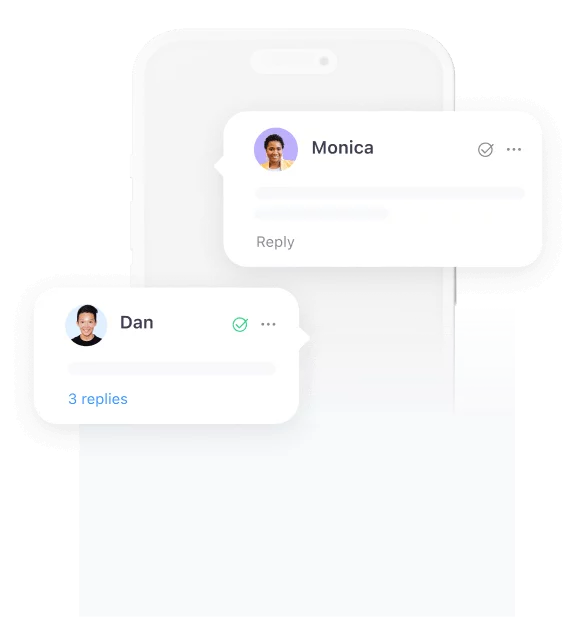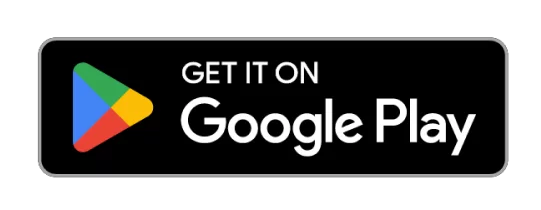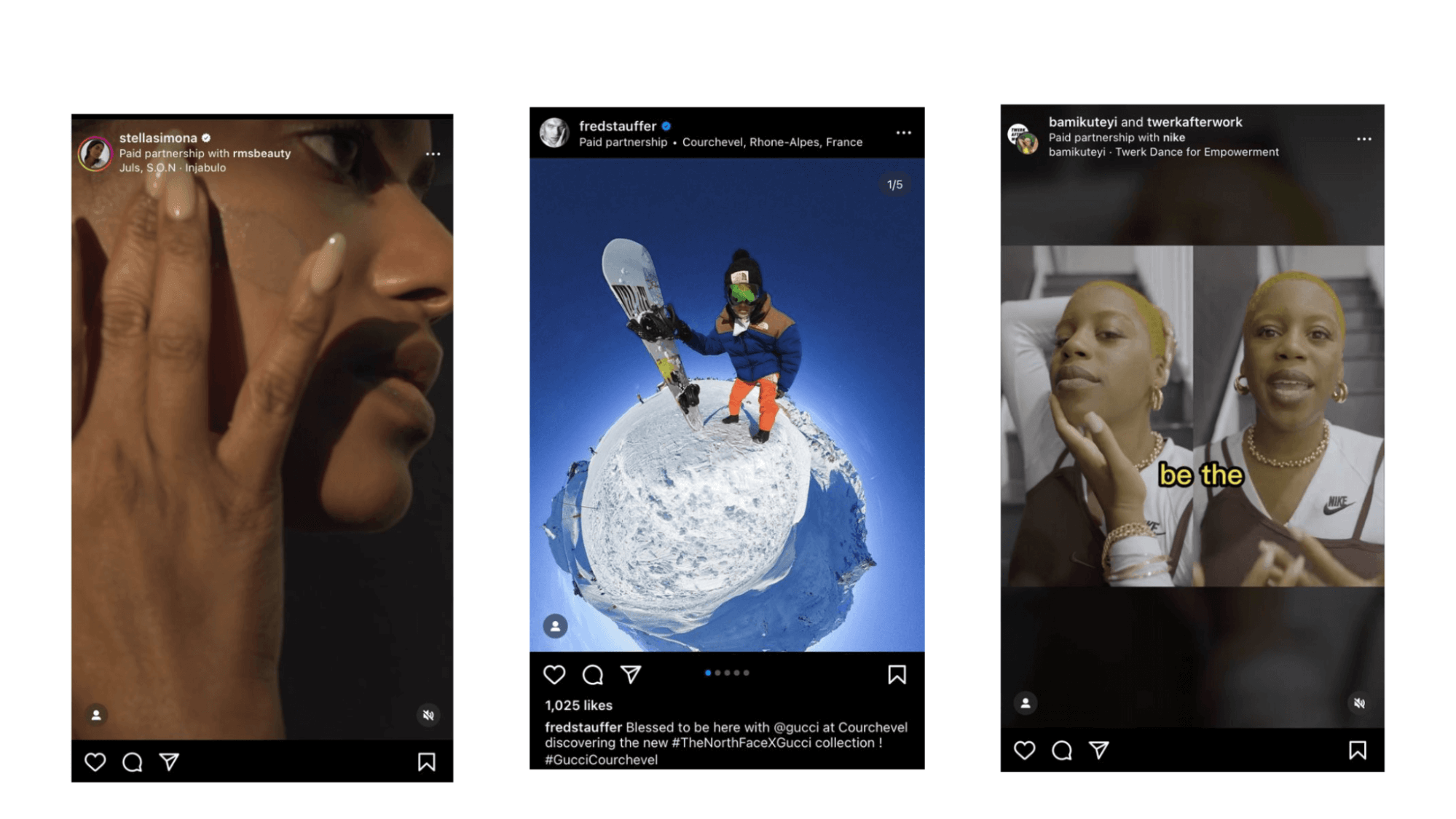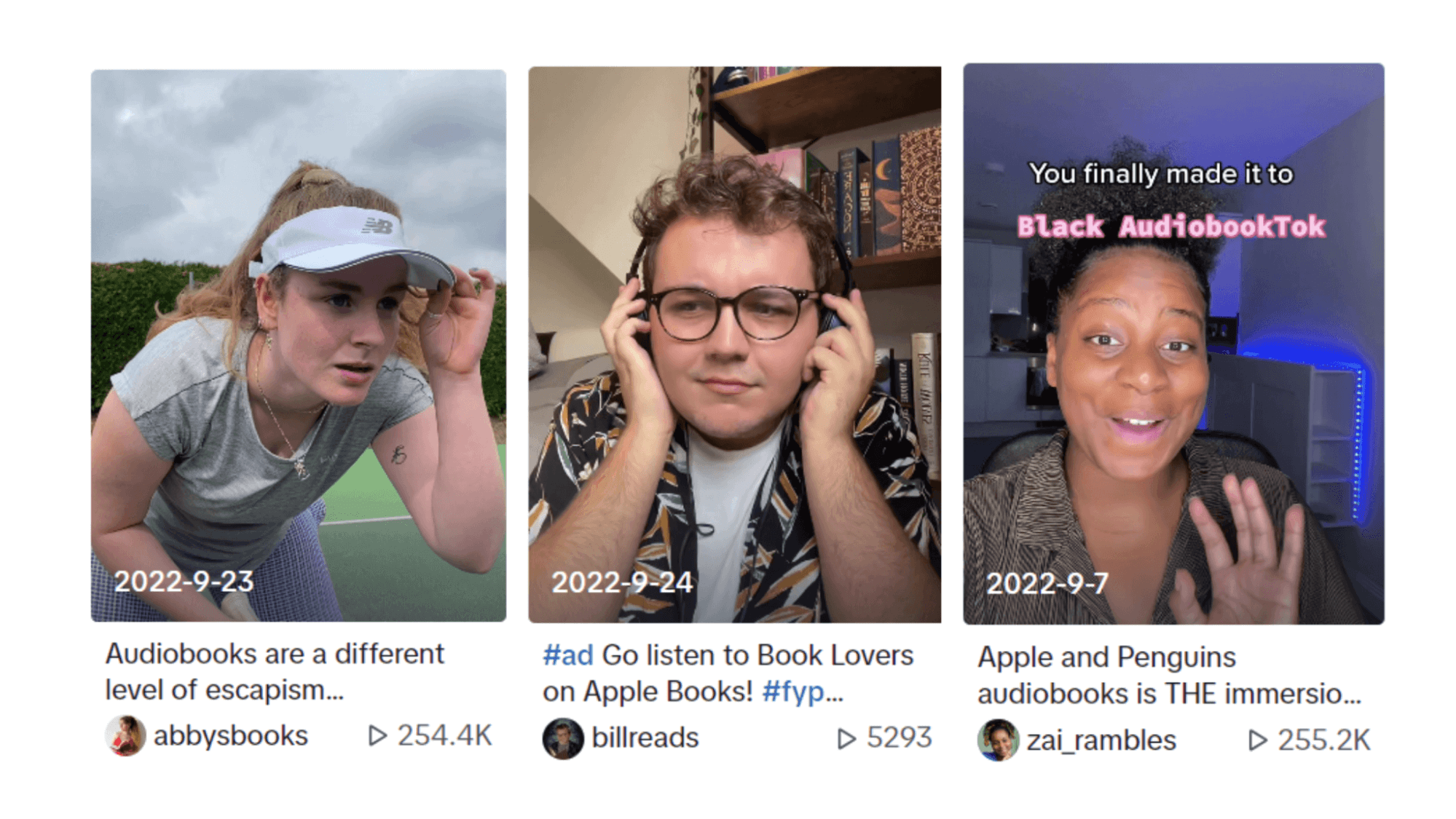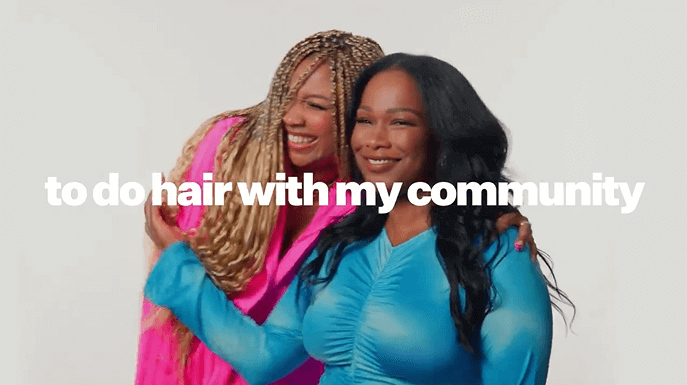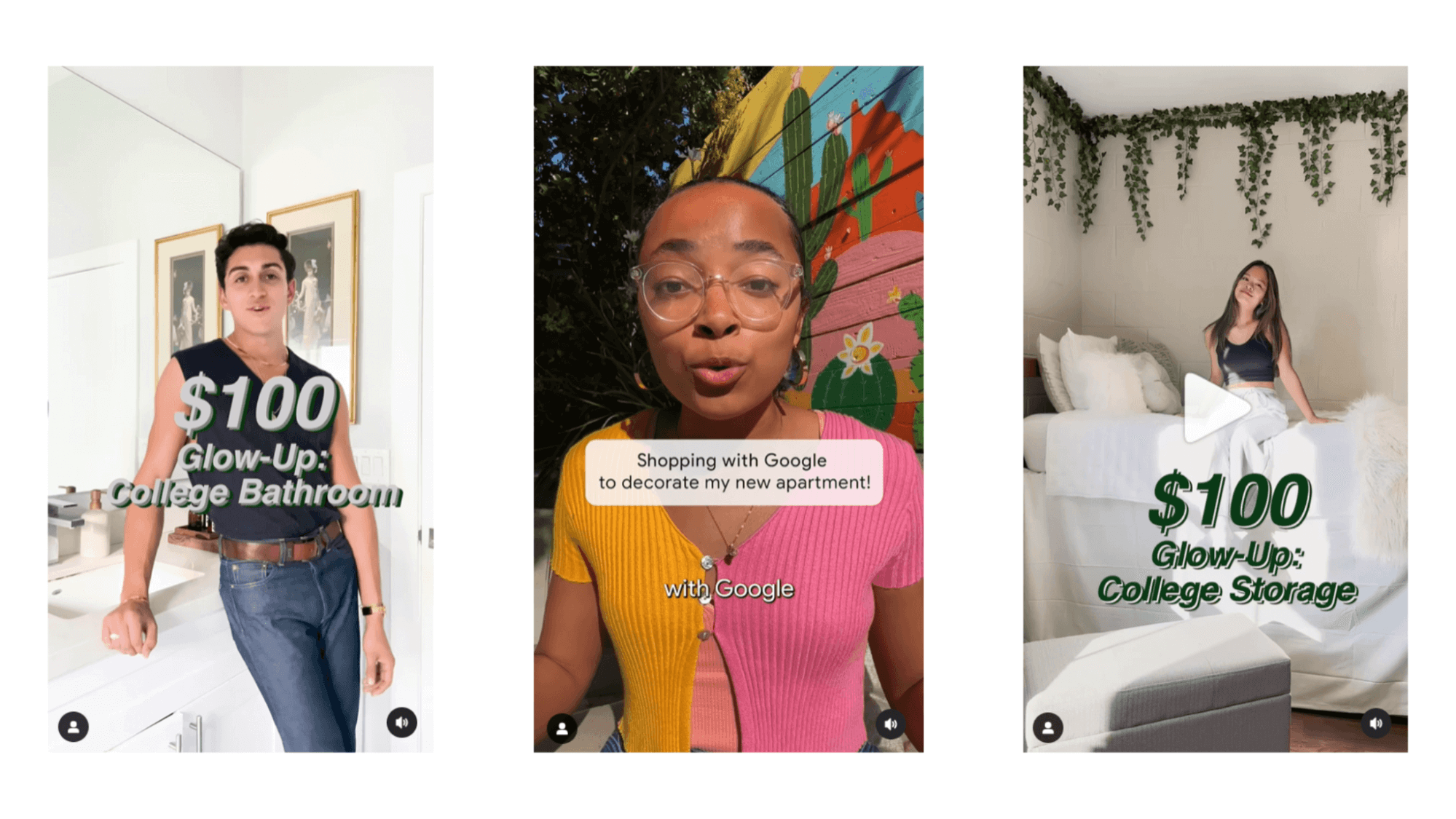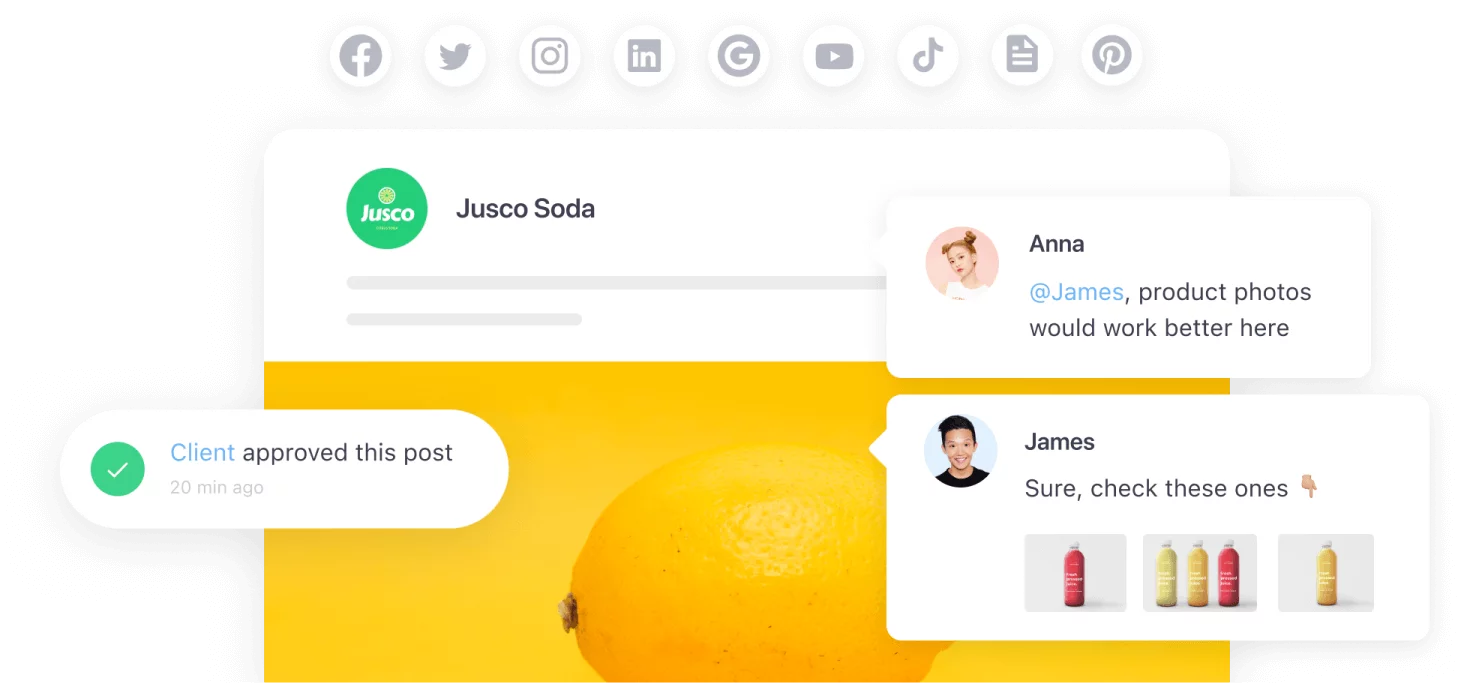Everyone wants a piece of the creator marketing pie. And for very good reasons. Creators have the attention of highly engaged audiences, are recognized as trusted sources of information, and can advocate for brands in a unique, relatable way.
This community-first approach is currently lauded as the “secret to marketing success” with 61% of marketers saying they can attribute sales to creator content on social media.
Creator-led marketing delivers unbeatable results. Today, you’ll learn how to seamlessly integrate it into your social media strategy.
Contents
What is creator marketing? Navigating the creator economy
Creator-led marketing is a strategy that social media marketers and digital marketers use to reach targeted audiences and boost a brand’s visibility in niche communities.
They work with a network of creative professionals or “digital creators” who have built deep connections with their audience, can quickly drive people to take action, and thus lower the barrier to entry for a brand in new markets.
76% of brands are diverting digital advertising funds into creator-led marketing initiatives because younger generations, who are the primary target audience for most brands, are increasingly skeptical of traditional advertisements and are more likely to trust the recommendations of people who they feel are being honest and transparent.
The holy grail of “like, know, and trust” works in favor of creators since they are genuinely invested in creating value for their community. This commitment has successfully positioned them as subject-matter experts in driving engagement and mobilizing communities.
If you work in marketing, you’re presented with a golden opportunity to tap into the great potential of digital creators by exploring innovative mediums like branded content ads and paid partnerships. When executed skillfully, the performance will speak for itself.
Is creator marketing the same as influencer marketing?
Creator marketing is not the same as influencer marketing, but there are strong similarities, and both terms are often used interchangeably.
In creator and influencer marketing, a mutually beneficial partnership is established to amplify the brand’s message, promote products, and drive sales. However, here are a few key differences:
What are the benefits of creator marketing?
Jerri DeVard, at the recent Cannes Lions International Festival of Creativity, had a lot to say about the benefits of creator-led marketing. In her words, it’s “going to change the trajectory of your business, your success, your engagement, and your brand reputation.” And she’s 100% right.
But let’s get more specific:
- Offers access to new and diverse audiences. Creators strongly influence niche communities and can extend your brand’s reach to their diverse follower demographics.
- Amplifies product demand. Creators produce authentic and relatable content at a scale that massively influences buying behaviors. So, your creator marketing campaign can generate heightened interest and demand because creators often educate their audience about your brand and highlight unique ways to use your products.
- Reduces content production costs. A report by Minisocial revealed that brands that worked with creators saved $72,000 on content production costs. Including creators as collaborators during the content planning process means you can deliver more marketing content efficiently and at lower costs.
- Improve organic search performance. With creator-led marketing, you can optimize your brand’s presence across the entire search universe and attract a surge of visitors to other owned channels.
- Cultivates brand advocacy. Creators are restoring the trust that brands have lost, driven by their authenticity and the values they share with their community.
Types of creator marketing
When classifying the types of creator marketing, it’s important to take note of these three categories that each serve specific marketing objectives: creators as a medium, creators as collaborators, and creators as ambassadors.
Creators as a medium
This type of creator marketing is primarily transactional. The creator is compensated for promoting products to their audience, they have total creative freedom, and the content exists on their social media channels alone.
- Commission-based affiliate partnerships. Provide creators with commissions for every sale generated from their product recommendations. Amazon offers this through its “creator connections” program. This is a good way to drive traffic to your website and get sales.
Creators as creative collaborators
This involves a more hands-on approach and offers brands greater creative control while leveraging the creators’ authenticity and creativity.
- Paid partnerships. This involves paying creators to feature your product or service in their content. You work closely with them to align the content with your marketing objectives while giving them the autonomy to infuse their unique style and voice.
- User-generated content. This means you’re actively collaborating with digital creators to produce content that can be used on brand channels. The content mimics images, videos, reviews, or testimonials typically shared by people who have bought your product.
Creators as ambassadors
This offers an opportunity to join forces with brand advocates and super fans for a longer-term relationship. Campaigns with these creators are done frequently, and the brand or creative agency involved has significant control over content production and usage rights for paid ads.
- Branded content ads. The goal here is to create ads that feel less intrusive and more relatable. These might be how-to and review-style social media ads that showcase the product in action or TV commercials featuring noteworthy creators in your niche.
- Ambassador programs. This is focused on building long-term partnerships beyond individual campaigns. Creators who become brand ambassadors represent the brand consistently over an agreed-upon period and often participate in a wide range of brand marketing activities.
Creator marketing examples from successful brands
There are many different ways that brands engage with creators to execute successful marketing campaigns, and we’ll walk you through some excellent examples.
Penguin Audio’s record-breaking #BookTok campaign
Penguin Random House launched a widely successful creator campaign and broke the record as the first-ever publisher to work with TikTok’s Creator Marketplace.
Penguin Audio leveraged the #BookTok community to promote audiobook listening on Apple Books, which generates billions of views globally. The campaign tapped into a dedicated and engaged audience already passionate about literature by partnering with creators known for their book recommendations and reviews.
By sharing their favorite books and encouraging their followers to listen, creators were able to spark excitement and key into a viral TikTok trend that led to conversions.
Takeaway: Start by identifying the social media platforms where your target audience is most active, then collaborate with creators who have a significant following and align with your brand values.
Ruka’s resonating creator-led TV commercial
The London-based brand Ruka Hair, cooked up a fantastic TV commercial featuring inspiring creative entrepreneurs whose work resonated deeply with their community of black women.
The commercial was shown on TV at strategic times to perfectly capture the attention of their target audience, who enjoyed watching shows like Loose Women, The Chase, and Love Island. The creators involved also shared it on their social media channels, which amplified the reach.
Takeaway: Experiment with multiple formats, like video marketing, when integrating creator content into traditional advertising.
Shop with Google’s college edition glow-up series
Back-to-school season is crucial for marketing teams, so it made perfect sense for Shop with Google to run a college “glow-up” series with students.
One student, Taylor Cassidy, shared how she finds items for redecorating her new room and workspace by searching Google’s shopping catalog. She also talks about using the AR feature to see how a piece of furniture would look in her space before she buys it.
In another reel, the architectural designer, Benedetto Rebecca, shows how he uses the price comparison tool to find the best deal on items for upgrading his bathroom.
Takeaway: People trust people more than they trust brands, so choose creators your target audience finds relatable. Their personal recommendations are bound to have more impact.
Designing a creator marketing strategy: how to collaborate with creators for long-lasting marketing success
Outline objectives about overall marketing goals
Begin by clarifying your brand’s overall marketing goals and how upcoming creator collaborations can help you achieve them. Also, consider the audience segments you intend to reach to ensure that there is an alignment between the creator’s audience and your target audience.
Once you have defined your creator marketing objectives, break them down into campaign-specific goals. For instance, setting a target for the click-through rates, product sales, or conversions from the creator’s content.
Find creators you can establish a meaningful partnership with
Take a strategic and productive approach to finding creators by first defining exactly who you’re looking for and outlining the criteria you’ll use to make a final decision.
When doing your evaluation, look at both their engagement rate and audience demographic data (you can try Phlanx’s engagement rate calculator). Also, look out for those with previous partnerships that performed well and generated positive press mentions.
Here are a few other things to take note of when outlining your criteria:
- Identify those with a pre-existing passion for your brand or who have demonstrated genuine interest.
- Choose creators who have built a strong community on platforms where your target audience frequently consumes content.
- Review the creator’s content to ensure there’s a match in both messaging and values. Prioritize their expertise, creativity, and potential to deliver the impact you desire.
- Be inclusive so that your roster of creators reflects the diversity of your customer segments. Also, include creators of varied audience sizes.
Plan and execute an outstanding campaign
Now, it’s time to run an experiment to test how creator-led marketing can significantly boost brand growth and aid in achieving your outlined objectives.
1. Choose the right creator marketing type
Different creator marketing types cater to various goals, so evaluate your options and choose those that align best with your campaign objectives. For example, if you want to showcase your product’s features and benefits, consider collaborating with creators who excel in product reviews and unboxings through commission-based affiliate partnerships.
2. Define and allocate your budget
Research industry standards and typical rates for creator marketing. Distribute your budget across different types of creators by evaluating the potential return on investment for each creator partnership. For first-time collaborations, consider testing with smaller budgets and scaling up if the results are promising. Be prepared to accommodate creators based on their rates, the scope of the campaign, and the value they can bring.
3. Create your brief
A well-prepared brief sets the tone for the collaboration and helps creators stay on track. Use this to offer background information about the brand, campaign objectives, and purpose of the collaboration. Include expected deliverables for the content to be produced and state the timeline for content creation, submission, and approval. Establish social media guidelines, but give them enough creative freedom.
4. Select creators and reach out
When reaching out to creators, personalize your pitch to show that you’ve researched their work and understand their content style and audience. Emphasize the benefits of working with you and why they are an ideal fit for the campaign. Choose creators based on the platforms where your target audience is most active and approach this partnership as a long-term collaboration rather than a one-off transaction.
5. Negotiate terms and finalize agreements
In your contracts, outline the compensation and incentives the creator will receive as well as the terms and conditions of the partnership. State the usage rights of the content they produce and provide information on legal requirements, such as FTC compliance and other disclosure regulations. Be open to negotiating so everybody leaves the table feeling like they got a good deal.
6. Launch your campaign
While your campaign is live, maintain open lines of communication with creators throughout the process and respond promptly to any questions or concerns they might have. Set up a well-organized system to track content deliverables and deadlines. Leverage creative assets by amplifying them on owned channels and other marketing platforms. This not only increases visibility but also shows appreciation for the creators’ efforts.
7. Measure and learn
To achieve success and grow with creator marketing, keep refining your strategy based on insights from content marketing metrics. Frequently launch experiments, test hypotheses, measure, refine, and repeat.
How to measure the success of your creator marketing strategy
If your primary objective is to reach a new target audience, track the number of impressions and engagements your creator-led content receives. Also, track website visits from creator content, including the pages visited and actions taken.
For affiliate partnerships, provide creators with unique links or promo codes to use in their content. By tracking the number of clicks, conversions, and sales generated through these links or codes, you can directly attribute sales back to the specific creator-led campaign.
Lastly, calculate the ROI by comparing the campaign’s costs ( like the creator fees) with the revenue generated from sales. These insights will guide you in optimizing future campaigns for even better results.
Final thoughts
Collaborate with creators to boost brand credibility and product demand.
Creator-brand integration is necessary for any marketer looking for a cost-effective way to boost organic reach, gain credibility, and drive sales in niche communities. Creators have changed how brands promote products. And their impact is felt across every aspect of the marketing lifecycle, from discovery to loyalty.
Find campaign management tools for hassle-free collaboration with your chosen digital creators.

Kachi Eloka is a freelance content marketing writer for B2B MarTech companies. She’s an excellent researcher who specializes in long-form content on search engine optimization, content operations, e-commerce, and social media marketing. When she’s not working, she’s busy watching films and attempting to learn the ukulele.

